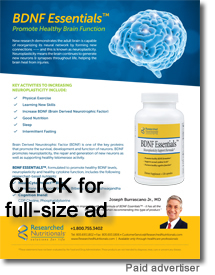|
A Laetrile Story
Second Opinion: Laetrile at Sloan-Kettering, a thought-provoking, 2014 documentary written and directed by Eric Merola, tells the story of laetrile through the eyes of science writer Ralph W. Moss, PhD. In the 1970s, thousands of cancer patients – as many as 70,000 per year, according to a 1977 Newsweek article – traveled to clinics in Tijuana, Mexico where laetrile was legal. Both Canada and the US had banned laetrile, claiming that it was ineffective; but the ban had not diminished patients' enthusiasm for the "quack" remedy. Bowing to public pressure and desiring "to curb the public's ‘false hope,'" Memorial Sloan-Kettering Cancer Center asked Dr. Kanematsu Sugiura, a retired research scientist, to study laetrile. Dr. Sugiura, a co-founder of cancer chemotherapy, had an impeccable reputation as a researcher.
Shortly after joining Sloan-Kettering's public relations department in 1974, Ralph Moss interviewed Dr. Sugiura for a biographical sketch. During that interview, Dr. Sugiura shared his research notes. That data showed that laetrile prevented lung metastasis and improved overall health in a mouse strain that did not respond to chemotherapy. Dr. Sugiura's results "shocked" Moss. He had viewed laetrile's popularity as an example of patients' desperation and gullibility. Moss was asked by superiors to keep them apprised of Dr. Suguira's research. Over time, Moss developed a deep respect for the researcher.
According to Dr. Sugiura's experiments, laetrile did not cure cancer; but it did stop tumor growth for some weeks. Moreover, only 10-20 percent of the mice receiving laetrile injections developed lung metastasis compared to 80-90 percent of the control mice that received saline injections. Leaders of Sloan-Kettering met with medical authorities from the National Cancer Institute, Food and Drug Administration, and American Cancer Society in July 1974, to discuss Sugiura's positive results and to plead for human trials. They planned to collaborate with doctors in Mexico to perform controlled clinical trials.
In March 1975, a higher-level meeting occurred, a meeting that included Daniel Martin, MD, who had developed the mouse strain used by Dr. Sugiura. Dr. Martin was "deeply hostile" to laetrile. The US government declined Sloan-Kettering's request for human clinical trials. Although Moss was unaware of the meeting at that time, he realized that many of Sloan-Kettering's top officials had begun to issue negative statements about laetrile. For Moss, the final straw came in 1975, when Sloan-Kettering vice-president Chester Stock, MD, told Medical World News that laetrile was "negative in all animal systems tested." Moss became convinced that Dr. Sugiura's findings were being covered-up.
For months, Moss struggled with his conscience. He wanted to keep his job with Sloan-Kettering. He had a wife and two children to support. Yet, he also wanted to publicize Dr. Sugiura's research and refute the false campaign that was burying a potentially helpful cancer treatment. Eventually, Moss co-founded Second Opinion, a whistleblower group that produced a newsletter in which Sloan-Kettering employees anonymously criticized various aspects of the institution – including the cover-up of Dr. Suguira's work. Ralph Moss finally went public in November 1977, when he represented Second Opinionat a press conference. He was fired the next day. The laetrile experience led him to write his first book, The Cancer Industry.
Second Opinion is more complex and less emotionally-charged that Eric Merola's first independent documentary, Burzynski, the Movie (2010). On the surface, Second Opinion is about laetrile and its cover-up. But the film also raises questions about scientific research and its subversion, about whistleblowers and the stress to their families, about personal integrity, and about the cancer industry. The 75-minute main feature that chronicles Ralph Moss's experience at Sloan-Kettering comprises just half of the DVD. In a dozen short interview segments, totaling another 74 minutes, Ralph Moss provides further information about the discrediting of laetrile. He also discusses promising cancer therapies used in other countries and Big Pharma's stranglehold on oncology in the United States.
The controversy surrounding laetrile, the emotional debates and battles, have faded over the past 40 years. 'War on Cancer' dynamics, the profit system that underlies medicine, the questions about scientific integrity remain. Second Opinion provides a compelling, historical look at an ongoing problem.

 Curcumin and HBOT Stabilize Myeloma Curcumin and HBOT Stabilize Myeloma
For five years, "a heavily pretreated relapsing myeloma patient" has remained stable with daily curcumin supplementation and a once-weekly course of hyperbaric oxygen therapy (HBOT), according to a 2017 article in BMJ Case Report. Myeloma, a cancer of the B-cells (lymphocytes produced in bone marrow), has no known cure. Treatment produces a pattern of remission followed by relapse, with each remission lasting for shorter periods. Eventually, the patient no longer responds to treatment. Median overall survival is 5.2 years from diagnosis. Patients with myeloma typically experience bone pain, renal impairment, recurrent infections, and anemia.
The first sign of myeloma for the patient in this study, a 57-year-old woman, was an incidental finding of M-protein (18 g/L) during a consult for hypertension in 2007. M-protein is a monoclonal protein, produced by abnormal or cancerous cells. Fifteen months later, she was diagnosed with stage 3 myeloma. At this point, the M-protein level was 49 g/L, urinary protein was 1.3 g/24-hour, and she was experiencing increasing back pain.
After vertebral collapse at T5 and T12, the patient agreed to chemotherapy with cyclophosphamide, thalidomide, and dexamethasone (CTD). Although the treatment produced a decrease in M-protein (34 g/L), the woman ended up in the hospital with hyponatremia, a fall in albumin, and worsening blood count. Her electrolyte imbalance was corrected, and she received red cell transfusion. Another treatment was tried (bortezomib and dexamethasone), but M-protein level rose to 49 g/L, so doctors discontinued the treatment after three cycles. The woman then underwent stem cell mobilization and 17 cycles of CTD re-treatment with "cautious titration of thalidomide." Attempts to harvest stem cells in 2011 failed. At this point, M-protein was 24 g/L; and the woman was "too neutropenic to be considered for a clinical trial."
The woman began taking an oral curcumin supplement (8 grams) each evening on an empty stomach. The supplement also contained bioperine, a component found in black pepper that aids absorption. After a few months, she added a weekly, 90-minute course of hyperbaric oxygen therapy (2 ATA), "which she has maintained ever since." M-proteins gradually declined to around 13 g/L, and her blood counts improved. Abbas Zaidi and colleagues report:
Over the last 60 months, her myeloma has remained stable with minimal fluctuation in paraprotein level, her blood counts lie within the normal range and she has maintained good quality of life throughout this period. Repeat bone imaging in 2014 identified multiple lucencies <1 cm in the right hip and degenerative changes in both hips, but these were attributed to osteoarthritis rather than the myeloma. Recent cytogenetic analysis revealed she had no abnormal cytogenetics by fluorescent in situ hybridization.
The authors credit the curcumin supplement for her improvement and call for a clinical trial to investigate curcumin's effect on myeloma patients. Curcumin, a polyphenol found in turmeric (Curcuma longa) has antioxidant, anti-inflammatory, antiseptic, and analgesic properties. In addition, laboratory studies have found that curcumin has anti-proliferative effects on several types of cancer cells, including myeloma cells.
It is possible that the consistent weekly use of HBOT is also playing a role. Also, the patient may be doing other dietary and self-help measures, not mentioned, that contribute to her ongoing good quality of life. Whether curcumin is a "magic bullet" or part of a synergistic effect, this case report suggests a possible, new treatment avenue for an untreatable disease.
Zaidi A, Lai M, Cavenagh J. Long-term stabilization of myeloma with Curcumin. BMJ Case Rep. 2017.
Raymaakers K. M-Protein Antibodies and Significance in Blood. March 5, 2018. www.verywellhealth.com

 HPV-Associated Head and Neck Cancers HPV-Associated Head and Neck Cancers
Poor oral health, smoking, and alcohol use have been long recognized as risk factors for head and neck cancers. In the past two decades, researchers have been investigating human papillomavirus (HPV) as another risk factor. It is very easy to find internet articles that connect oral cancers to HPV (and possible prevention with an HPV vaccine), but oral health and smoking continue to be major risk factors, according to epidemiological studies.
While there is an association between HPV (especially HPV-16) and oropharyngeal cancer, HPV is not considered a risk factor for cancers of the oral cavity, larynx, and nasopharynx. A 2017 US epidemiological study, led by Carole Fakhry, MD, MPH, looked at the prognostic role of sex, race, and HPV status in 860 patients with oropharyngeal and non-oropharyngeal head and neck squamous cell cancers. Fifty-six percent of the 239 people with oropharynx cancer were HPV-positive. In comparison, only two percent of 253 patients with oral cavity cancer, five percent of the 243 with larynx cancer, and 10 percent of the 125 with nasopharynx cancer were HPV-positive.
Among patients with non-oropharyngeal cancer, HPV status had no impact on overall survival; and the authors concur with practice guideline organizations like the College of American Pathologists, Cancer Care Ontario, and the Royal College of Pathologists, that have found no reason to test routinely for HPV in patients with non-oropharyngeal cancers. Interestingly, patients with oropharyngeal who were also HPV-positive had a "survival advantage" at follow-up (5 years and 10 years).
Another 2017 epidemiological study, conducted by Angela L. Mazul, PhD, MPH, and colleagues at the University of North Carolina at Chapel Hill, looked at HPV status and oral health. Poor oral health is associated with smoking and alcohol use. The authors report that two earlier studies had found a positive association between periodontitis and HPV-positive oropharyngeal cancer compared with HPV-negative oropharyngeal cancer. Chronic inflammation and bacterial infection, which are characteristic of periodontitis, may "[alter] the natural course of HPV infection," write the authors. In cervical cancer, co-infections with bacteria like Chlamydia appear to have a synergistic effect with HPV, increasing cancer risk.
For their study, the UNC researchers enrolled 248 patients with oropharyngeal cancer, 244 with non-oropharyngeal head and neck cancers, and a sex, age, and race frequency-match control group recruited via the NC Department of Motor Vehicle records. Interviews conducted by trained nurses provided data on oral health, dental care, smoking history, demographics, lifestyle, diet, and other risk factors. HPV status was determined with p16 immunocytochemistry evaluation, and clinical information (e.g., tumor site) came from patient records that were reviewed by a pathologist and a head-neck cancer surgeon.
The authors report a strong association between oral health and head and neck squamous cell cancers (HNSCC) – regardless of HPV status. In patients with oropharyngeal cancer, routine dental exams were significantly associated with reduced risk of both HPV-positive (OR, 0.52; 95% CI, 0.25-0.76) and HPV-negative cancer (OR, 0.55; 95% CI, 0.36-0.86) compared with controls.
Smoking a pack of cigarettes a day for ten or more years (≥10-pack years) was significantly associated with increased risk of head and neck cancer of all types. The group with HPV-negative tumors had the greatest percentage of long-term smokers (82.9%), followed by the group with HPV-positive cancer (63.1%) and controls (44.2%).
Taking care of one's oral health and not smoking are self-care measures that reduce the risks of all kinds of illness.
Fakhry C, et al. The Prognostic Role of Sex, Race, and Human Paillomavirus in Oropharyngeal and Nonoropharyngeal head and Neck Squamous Cell Cancer. Cancer. May 1, 2017; 123(9): 1566-1575.
Mazul AL, et al. Oral Health and Human Papillomavirus-Associated Head and Neck Squamous Cell Carcinoma. Cancer. January 1, 2017.

Intravenous Vitamin C to Support Cancer Patients
An informative, new review article in Current Oncology provides the rationale for using intravenous vitamin C (IV C) as a supportive measure for people with cancer and clinical safety considerations. The team of authors, comprised of MDs and NDs led by E. Klimant, say, "Extensive literature demonstrates that cancer patients experience vitamin C deficiency correlated with reduced oral intake, inflammation, infection, disease processes, and treatments such as radiation, chemotherapy, and surgery." IV C decreases inflammation in cancer patients by suppressing cox-2 and nuclear factor κB. Studies with advanced cancer patients have shown reductions in C-reactive protein; interleukins 1α, 2, and 8; tumor necrosis factor α; and eotaxin with IV C therapy. Patients also experience significant improvements in physical, emotional, social, and cognitive functioning. While this article does discuss the use of IV C in patients receiving chemotherapy, it does not discuss its use with radiation therapy nor as a treatment for the cancer itself.
"Giving 5-25 g IV C over a period of 30-120 minutes is safe for cancer-affected adults of any sex and body mass to decrease inflammation...," the authors write. "In addition, 500-4000 mg oral vitamin C daily is safe during the intervals between IV C treatments and could support continued oral repletion, as observed in studies combining oral and IV C in adults with cancer." The authors recommend giving patients oral fluids before and during treatment to prevent the most common side effects reported in clinical trials: nausea, dizziness, dry mouth, perspiration, and weakness.
While IV C is safe for most, it is contraindicated in people with glucose 6 phosphate dehydrogenase deficiency and in people with uncontrolled serum glucose above 300 mg/dL. Caution is advised in people with iron and copper storage diseases, renal failure, history of kidney stones, and pregnancy or lactation.
Recognizing "theoretical concerns" that IV C might reduce the effectiveness of chemotherapy treatment, Klimant et al "recommend that clear information be provided to patients that the effects of adding IV C to chemotherapy are unknown with respect to overall efficacy and that vitamin C could potentially decrease treatment efficacy despite any positive effect on symptoms. If the decision is made to provide IV C in supportive care, we recommend that it be given before chemotherapy, followed by a 30- to 60-minute break, or that it be given 12-72 hours after chemotherapy with attention to the half-life and clearance of the chemotherapy."
Klimant E, et al. Intravenous vitamin C in the supportive care of cancer patients: a review and rational approach. Current Oncology. April 2018;25(2):139-148.
Jule Klotter
jule@townsendletter.com
|
![]()
![]()
![]()
![]()







